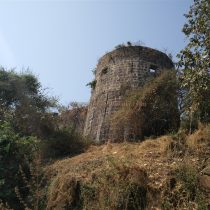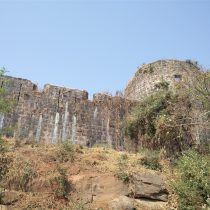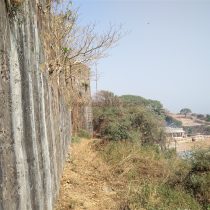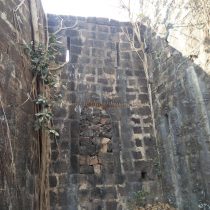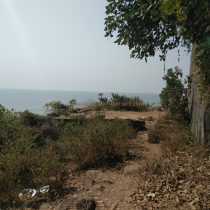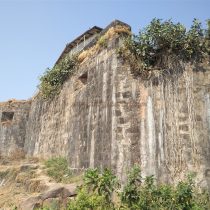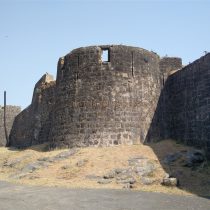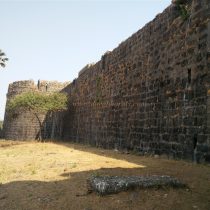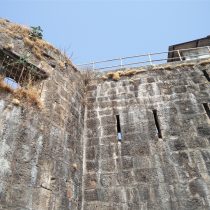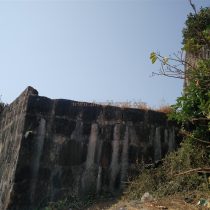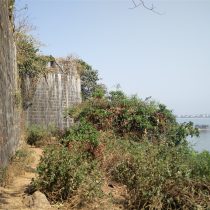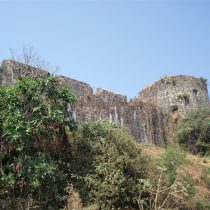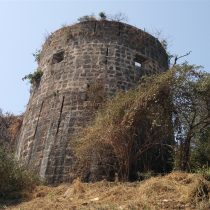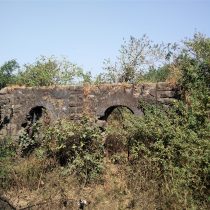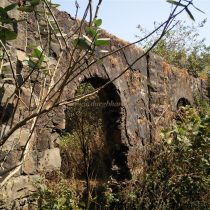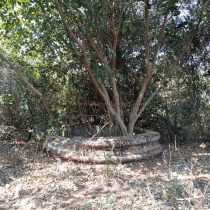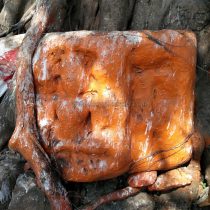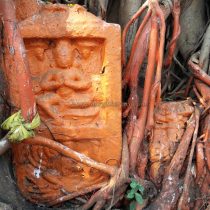MADH / VERSOVA
TYPE : COASTAL FORT
DISTRICT : MUMBAI
HEIGHT : 0
GRADE : EASY
The Madh-Marve beach on the Western Railway is well known to Mumbaikars. Madh village is about 14 km west of Malad railway station. In the distance from here lies the beach. The fort of Versova or Madh is built on a small hill outside this Madh village. There are a total of 4 forts in the Madh area, such as Madh Kot, Versova or Madh Fort, Erangal Buruj, and Buruj on Ambova Island. The fort of Madh still bears witness to its past splendor. The fort is under the control of the Navy and the general public is not allowed to enter here but the fort can be seen from the outside. Today, it is one of the most beautiful forts in Mumbai. The entire ramparts and bastions of the fort are intact. Departing from Malad West, BEST bus number 271 can reach Madh village at a distance of 15 km.
...
From Malad, get off at the fish market stop in Madh village, then from Harbadevi temple on the right side and if you come from Andheri by boat then on the left side, if you walk towards Killeshwar Mahadev temple, you reach the backside of the fort. The road leading to the fort is paved with dense trees on both sides of the road. Walking on this path while keeping an eye out on the trees, you will see two wells on the right-hand side. One of the wells is newly constructed and the other is for rainwater harvesting. Killeshwar Temple is very spacious and is close to the shore. The ramparts and bastions of Versova fort can be seen behind this Shiv temple. Between Versova and Madh is a small creek of about one thousand to twelve hundred feet. The fort was built by the Portuguese at the mouth of the creek in the early 16th century. The fort has sea on both sides and lands on the other two sides. The fort was used by the Portuguese to keep an eye on Versova / Marve Bay and was also used as a prison during the British rule (Now it is used for photography). A footpath leads to the back of the Mahadev temple near the ramparts of the fort. Here you can see some new and some old Portuguese buildings. With this footpath, you can walk around the fort from the side of the ramparts and bastions. As the fort is under the control of the Armed Forces, it is not possible to see the fort from inside without permission, and photography is prohibited. The bastions of the fort are round, tall, and magnificent. The ramparts are also strong, ranging in height from twenty to twenty-five feet. There is a barrage for cannons at regular intervals on the ramparts but there is no way to know if there are cannons here as there is no access to the inner fort. The walls and bastions of the fort are lined with barrage. The fort has a total of two gates and the gate on the seaside is currently closed with stones. There is a Cobra sculpture carved on this door. After completing a circular detour down the ramparts of the fort, we climb a slight hill to reach the second entrance to the Versova / Madh fort. This entrance is closed and steps are made to enter the fort from the right-hand bastion. But here the door is locked. There is a spacious courtyard in front of the fort. There are huge palm trees on this field. Half an hour is enough to see the fort. Apart from this, there is a temple of Harbadevi on another hill in Madh village and some of its ancient idols are worth visiting. Madh is the southern tip of the Portuguese-held island of Sashti. As there were sixty-six villages on this island, it was called Saha Sashti but later on, over time, it became Sashti. The Mahim / Versova Bay separated the Mumbai Islands from the mainland. This area is very important in history due to the trade going through this creek. The trade rivalry between the Portuguese and the British was rooted in their rift. So, in 1600, they built a fort on the island's mainland to protect the Portuguese-held Sashti from sea attacks. It was later used to protect the British-occupied Mumbai Islands. During the Maratha invasion of Vasai in 1737, many battles took place around this fort. It is recorded that Khandoji Mankar, the chief of Chimaji Appa, attacked this fort twice in 1737. The Marathas could not conquer the forts of Bandra and Vesave even after winning the entire Sashti, but in the invasion of 1739, the Marathas conquered these forts too. During the Vasai campaign, this area came under the control of the Marathas, and the Portuguese were wiped out from this area. The fort was later recaptured by the British.
© Suresh Nimbalkar

